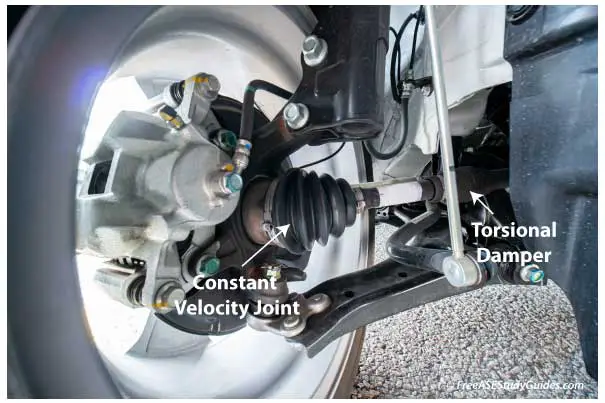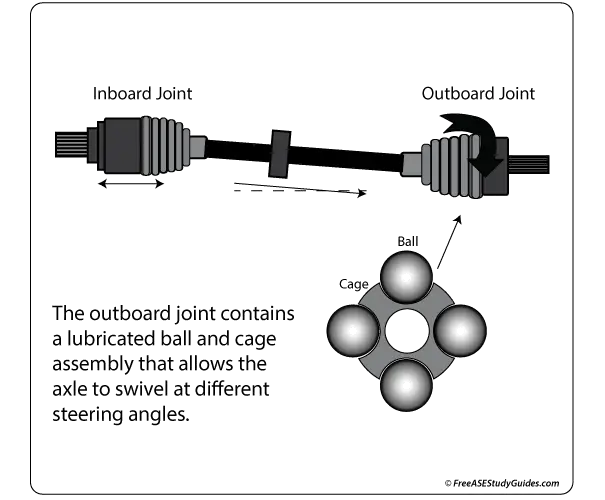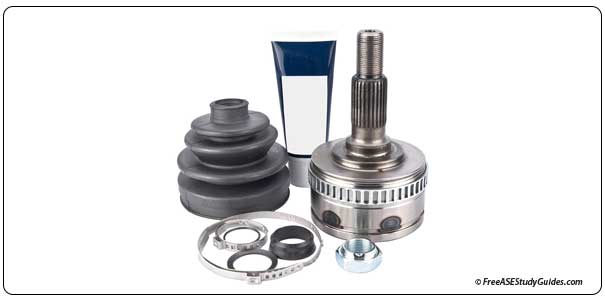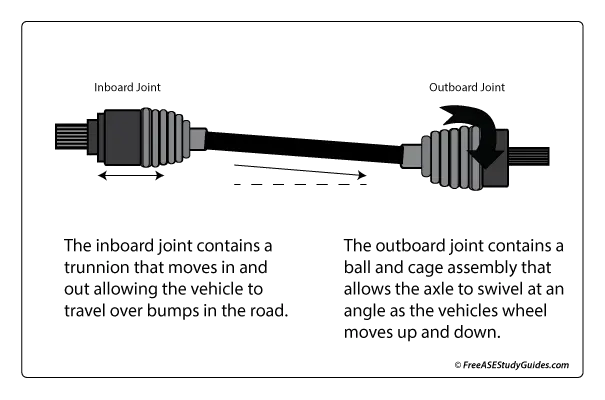Front Wheel Drive: CV Joints

A typical FWD axle consists of a half shaft with an inner joint, an outer joint, and possibly a torsional damper in the center. The most common failure of this type of axle is a worn or damaged outer or (CV) constant velocity joint.

Its unique ball bearing design allows the axle to apply torque to the wheel at an angle, like while cornering. The most common type of outer joint is called a Rzeppa joint. The boots contain the thick grease required to keep these joints operating smoothly. These protective boots tend to wear and break open, leaving the inside cage and bearings exposed to the environment.
Replace a CV Joint Boot

The entire axle is often replaced if worn or damaged. Water contamination will ruin a CV joint. Most are serviceable by removing the boot's clamp, pulling the boot away, and then removing a snap ring or a circle clip from the shaft. Then, carefully tapping on the outside of the outer bearing race with a soft hammer. After cleaning the parts, which include 6 ball bearings, the inner bearing race, a bearing cage, and the outer bearing race, carefully inspect these parts for damage and wear. When rebuilding this joint, pack this bearing cage completely with the grease supplied in the kit, then fasten the boot tightly.
Inner CV Joint

The inner joint consists of the tulip and the tripod assembly. This joint provides the axle torque and the in and out movement as the vehicle travels over bumps in the road. Excessive vibration during acceleration and deceleration indicates a problem with the inner joint. This joint is serviced similarly to the outer joint. A loose, damaged, or missing torsional damper can also cause a shudder or vibration while traveling at highway speeds.